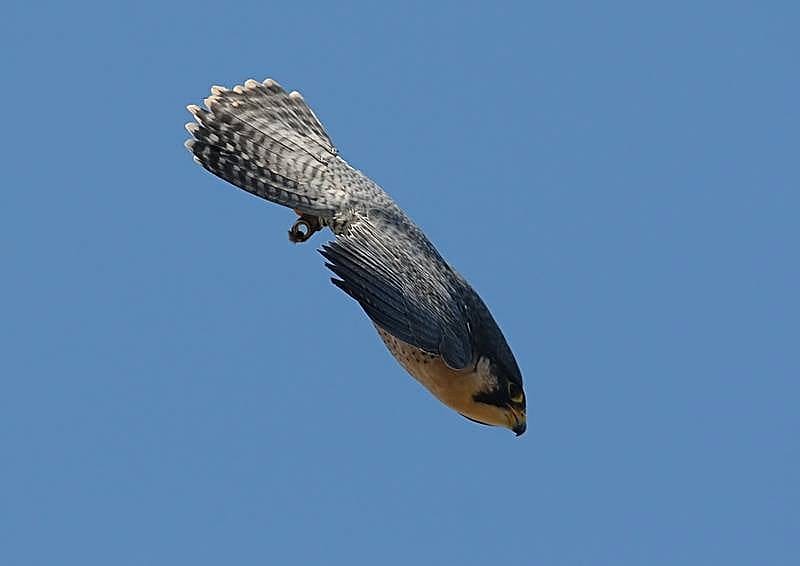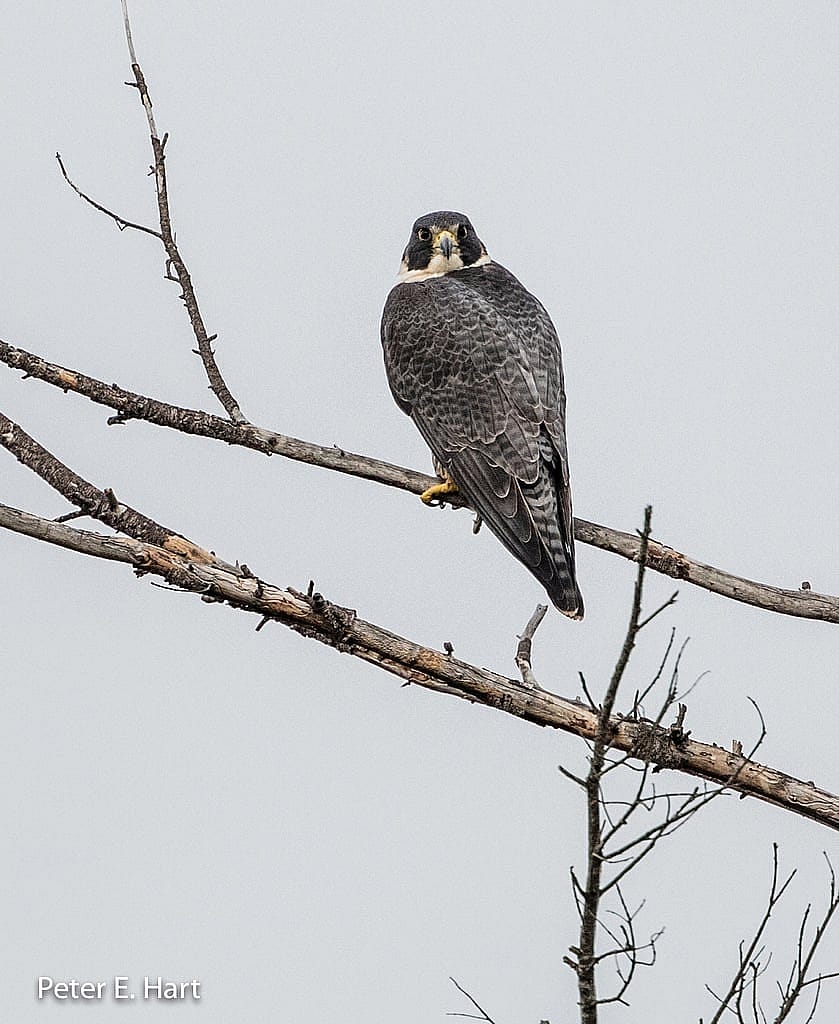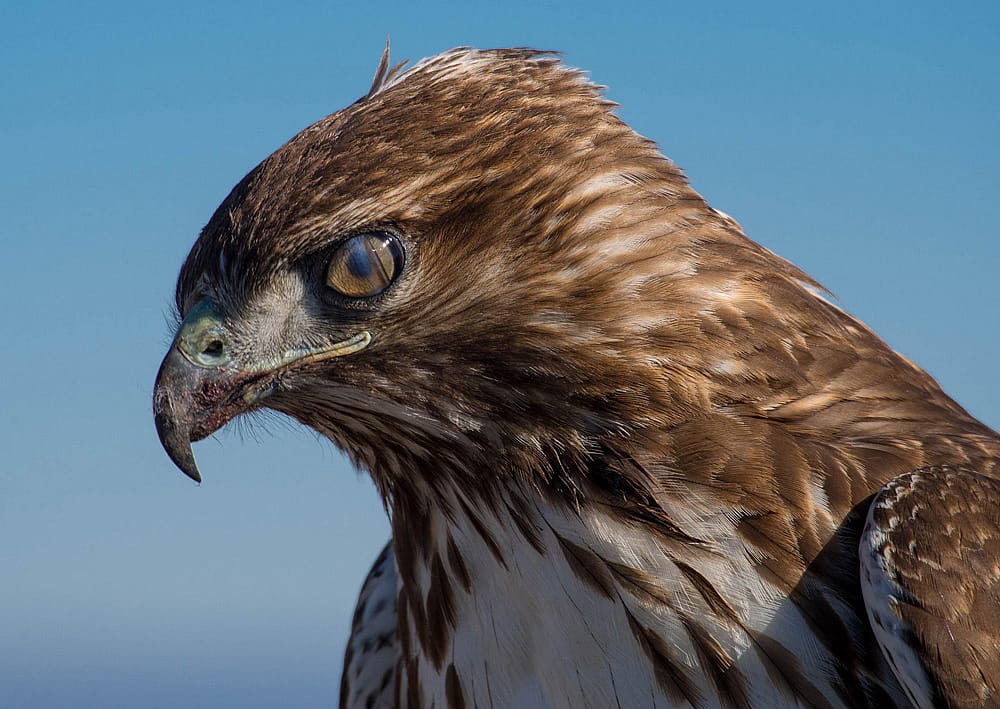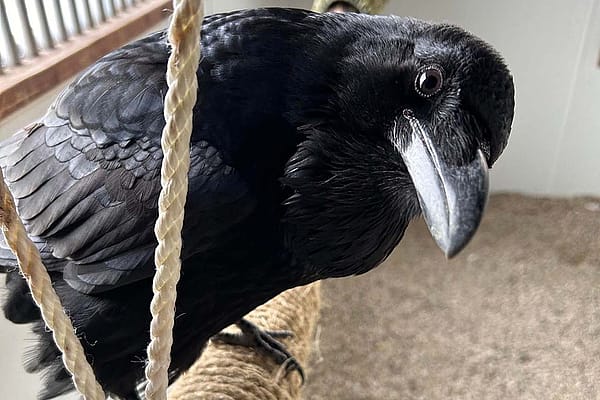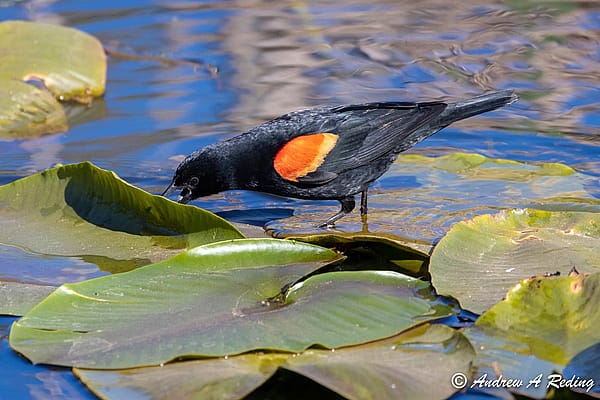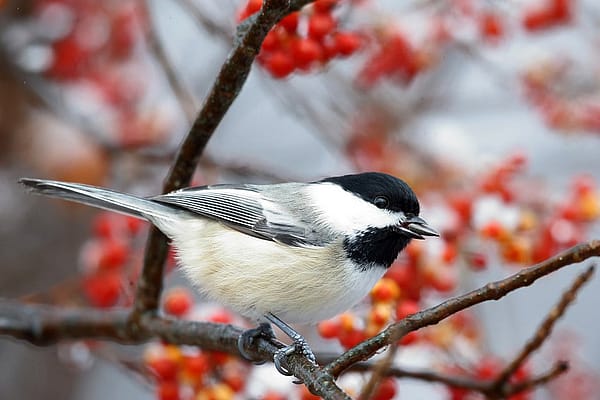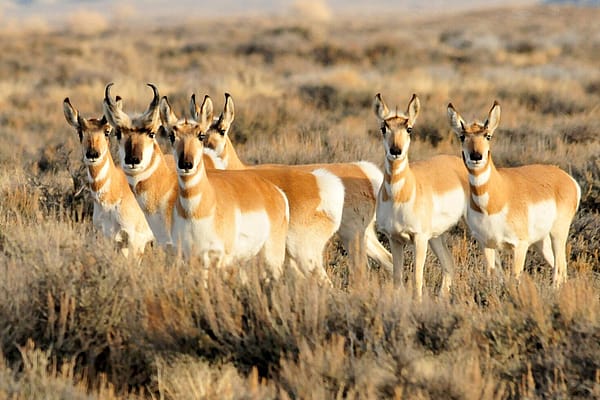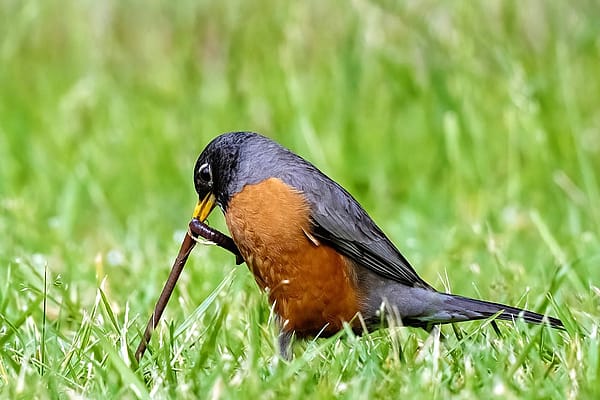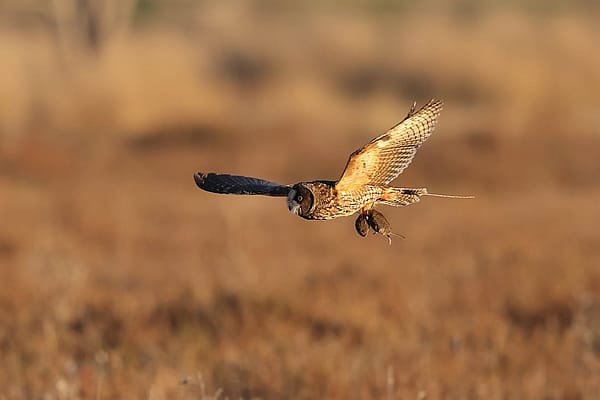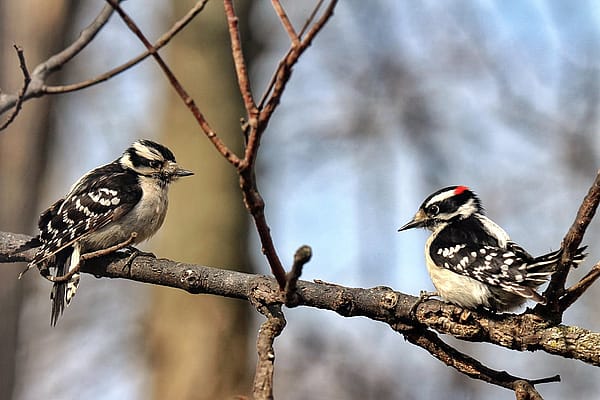
Adaptations For the Speedy Life Style of Peregrine Falcons
How Speedy is a Peregrine?
Peregrine Falcons are speedy birds that are popular with bird watchers and falconers all over the world. The peregrine has been used for over 4,000 years in falconry and are arguably the fastest animal on the planet. Their spectacular dives and quick chases are a wonder to behold. According to Cornell Lab of Ornithology’s web page, Allaboutbirds, in traveling flight peregrines average 25-34 mph. When pursuing prey they may reach speeds of up to 69 mph. This is fast. But what gains them their reputation is their dives, known as stoops. Peregrines are able to reach speeds of over 200 mph when diving toward prey. One research team clocked their study bird at 242 miles mph while in a stoop.
Watch High-Velocity Falcon
It’s a Risky Life!
These birds are living a risky life style. For first year birds learning to navigate their flight and stoops is especially dangerous. According to Kate Davis in her book Falcons of North American, falconers have been known to jokingly equate the Peregrine’s extreme hunting style to “giving a 16 year old the keys to a Ferrari.” Nova’s 2019 program, “Worlds Fastest Animal,” tells us that fewer than half of the young Peregrines make it to adulthood. After that, depending on the reference you read, the life expectancy of an adult is 10 to 12 years. Even in cities where there is less danger from predators they may fly into windows or fledge out of bridge nests right into the water and drown. Although fledglings are not as adept at hunting as adults, even an adult’s success rate in a hunt is believed to be only 20%.
How can a Peregrine perform and maintain this speedy life style?
One reason is due to their sleek teardrop body shape and stiff compact wing feathers, which allows them to slip easily through the air with very little wind resistance. Kate Davis tells us that the feathers of a Peregrine vibrate in such a way that in a fast dive they make a sound like “tearing a sheet of canvas.”
These birds can also withstand a much higher G-force than humans. According to NOVA, fighter pilots can handle up to 8 – 9 Gs. Both Peregrines and Gyrfalcons can withstand up to 25 Gs. This is comparable to 25 times the force of gravity pushing on your body. This is important as Peregrines often kill their prey by diving quickly toward them, then hitting them with bald up feet or scraping them with open talons. Before the strike they turn up, thus putting on the brakes to slow down before passing by their prey for their kill.
Body Features You Can See
Externally peregrines and all other falcons have a structure in their nostrils called a tubercle. This acts as a baffle causing the air rushing into their nostrils to curve in a spiral manor. This slows down the air which prevents the air pressure entering through the nostrils from rushing straight in and causing lung damage.
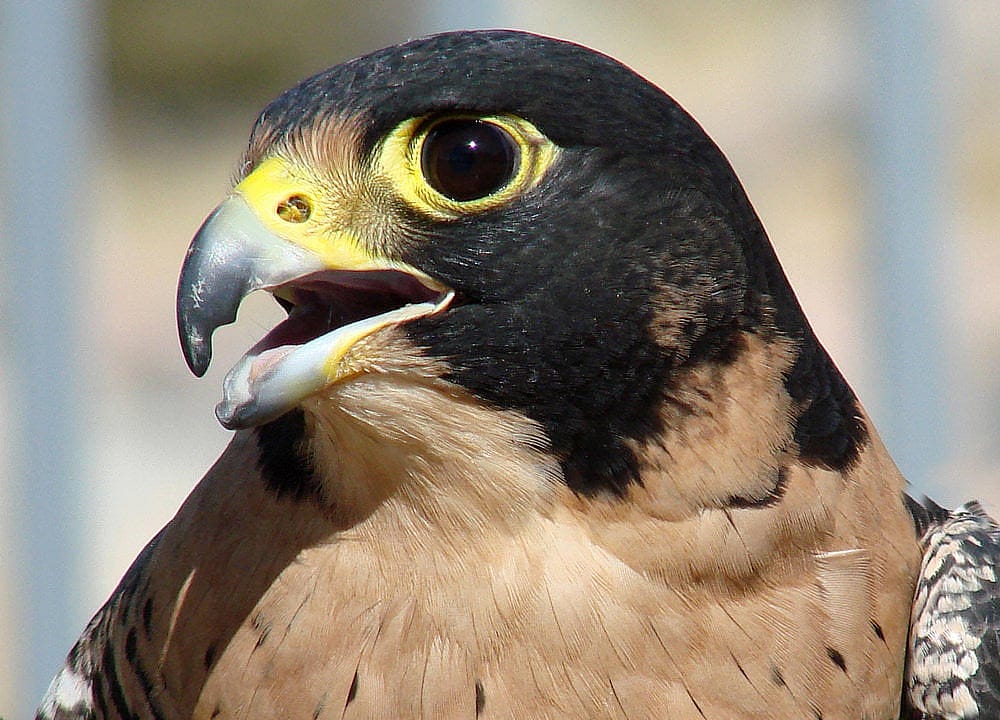
The eyes of birds have a nictitating membrane or “third eyelid” as it is often called. This membrane closes sideways across the eye from the inner corner to the outer corner. When the membrane is blinked it lubricates and cleans the eye. This semi-transparent membrane can be closed to protect the Peregrine’s eyes from dust particles and rushing air as it dives toward its prey. The Peregrine also has tears as thick as maple syrup which helps to keep their eyes from drying out.
What’s Inside the Peregrine?
Besides these observable body structures the Peregrine’s internal organs and skeleton also contributes to their speedy life style. One advantage they have is the size of their keel bone. This is the place where the major flight muscles are attached. These flight muscles are especially powerful. It is these muscles to which the stiff feathered pointed wings are fastened.
Falcons also have an extra pair of vertebra on their tailbone. This allows for a larger area to attach the strong muscles which enhances their tail movement and maneuverability.
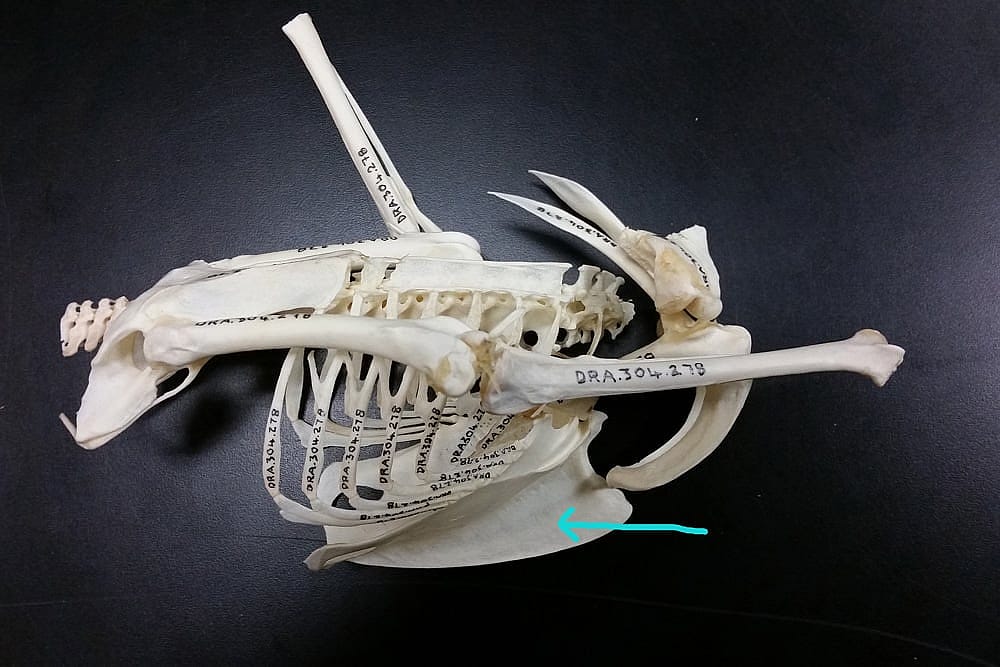
Along with these enhanced skeletal structures Peregrines also have large, strong hearts and lungs that allow for flying and diving at fast speeds while still breathing. Their lungs are highly efficient containing air sacs that keep the lungs inflated even when exhaling. The Peregrine Falcon’s heart beat is very strong, beating up to 900 times per minute. This allows the oxygen to travel throughout the bird at a high rate so that it does not fatigue quickly. This amazing heartbeat speed also allows Peregrines to flap their wings up to four times per second.
Putting together their body shape, feather structure, skeletal adaptations, and specially developed heart and lungs, it is no wonder that these birds are able to live a life of speed.
Watch this video for a demonstration of some of the adaptations I have described in this blog:
Photo Credits:
Peregrine Falcon black background by Christian Fritschi, Attriution 2.0 Generic license
Peregrine Falcon Diving by Alan Benson, downloaded with permission from The Peregrine Fund’s FaceBook page
Peregrine back view of body shape, PEHart, Attribution-ShareAlike 2.0 Generic license
Hayabusa’s tubercle, photo by the author, Attribution-NoDerivatives License, https://www.flickr.com/photos/157982666@N07/
Blinking Hawk, by Amit Patel, Attribution 2.0 Generic License. This license allows the user to make changes. I cropped out excess blue background.
Peregrine Falcon skeletal photo by the author, Anne Hay, https://centerofthewest.org/author/anneh/
Peregrine in flight by Nik Borrow, Attribution-NonCommercial 2.0 Generic license
Written By
Anne Hay
Anne Hay has a Bachelor's degree in Elementary Education and a Master's in Computers in Education. She spent most of her working years teaching third grade at Livingston School in Cody, Wyoming. After retiring she began doing a variety of volunteer work for the Buffalo Bill Center of the West’s Draper Natural History Museum. Anne loves nature and has a concern for the environment. She believes that educating the public, so that they will have a better understanding and appreciation for the natural world, is very important. Because of this belief, volunteering at the Center is a perfect fit. She spends time in the Draper Lab, observing eagle nests for Dr. Charles Preston’s long-term research project on nesting golden eagles, writing observation reports of raptor sightings in the Bighorn Basin, and working with the Draper Museum Raptor Experience. Anne states that, “Having a bird on my glove, is one of my all time favorite things in life.”
